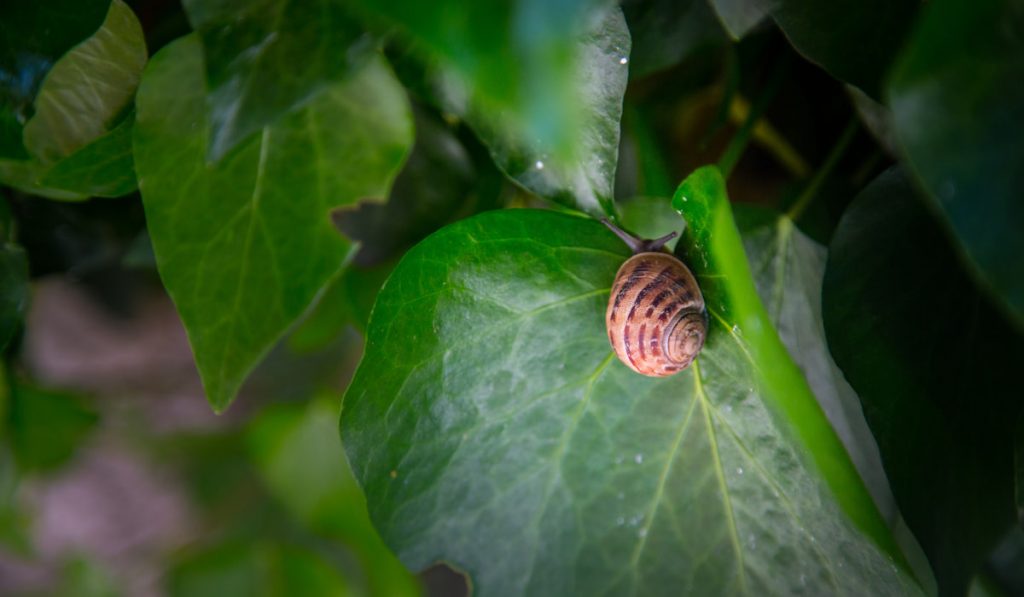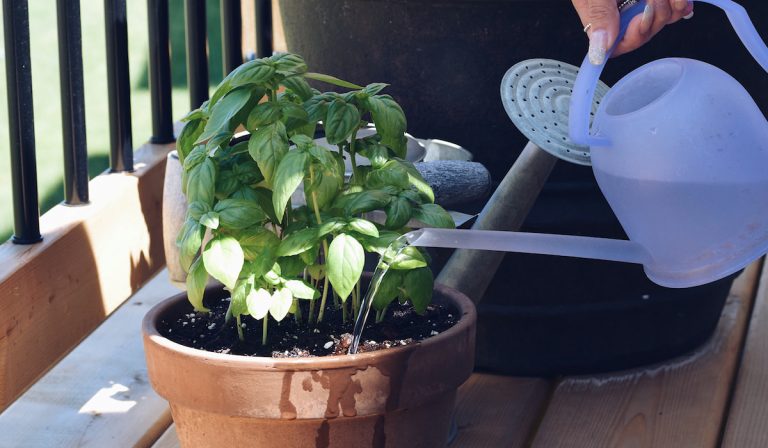Can a Garden Snail Kill You?
Do you know that eating the wrong snail or eating food after touching an infected snail can be potentially fatal? It turns out if a snail or slug is carrying a certain parasite, then, yes, exposure could be fatal.
The parasite’s name is Angiostrongylus cantonensis, also known as the rat lungworm. It’s a scary enough name, and it deserves attention from everyone, especially gardeners who need to be on the lookout for snails and slugs in their plants.
Rat lungworm exists in some parts of the United States. Researches, so far, have identified it in a few states already. Here we will talk a bit about what rat lungworm is and what you can do to keep snails out of your garden.

Table of Contents
The Basics on Rat Lungworm
Snails and slugs become carriers of rat lungworm by eating rat droppings that contain the parasite. This microscopic worm, if eaten by certain animals, attacks the central nervous system, causing significant damage.
A major problem with rat lungworm is that it’s almost impossible for a normal person to identify. Carrier snails and slugs show no obvious sign of infection, so you don’t know whether you’re looking at a healthy snail or one with the parasite.
In humans, ingesting rat lungworm can be fatal in some cases because it leads to a rare form of meningitis. When rat lungworm is ingested by humans, it can burrow into the brain and affect overall health.
If you’ve got pets, there is cause for concern as well. If a dog or some other family pet eats a host snail, then the parasite can infect their brain and be deadly as well.
Even the smallest risk of deadly garden snails is enough to make most gardeners worry. Most of the time, we view snails as harmless creatures. Odds are that you, as a kid, enjoyed picking up snails and playing with them. A lot of children have fun looking at all of the snails up close after a rainstorm, for example.
The best thing you can do is to not eat raw slugs or snails. That may sound like a no-brainer to a lot of people, but there have been cases of rat lungworm reported in escargot farms outside of the U.S.
Something you should also keep in mind is that a lot of people handle snails and slugs for fun. As a general rule, staying away from snails is a good idea.
If you do handle any of them, there are things you can do to minimize any chance of a rat lungworm infection. Here are some tips on how to handle snails in your garden safely to eliminate risk.

How to Handle Snails in the Garden
If you’ve got an outside garden, you’re likely to come in contact with snails at some point. Snails love to come out in the rain, and they love to eat garden vegetables and other plants.
Most of the time, snails will be more prominent at night when things cool down. They’re probably not a big deal, but as a general rule, people should make sure to follow the following precautions whenever handling snails.
Remove the Snails from the Garden – The first thing you should do when you find a snail in your garden is to remove it. Most often, this can be done by simply picking up the snail and placing it away from your plants. If you want, you can use a small gardening tool and a shovel so you don’t have to touch it with your hands.
Wash Your Hands – If you do handle the snail with your hands, then you should wash them before handling anything else in your garden. This is a common-sense precaution just in case. You should make sure to wash your hands thoroughly, especially if you’re going to be handling or preparing any food.

Things You Can Do to Keep Snails Out
As we’ve said before, the vast majority of slugs or snails that you come across will be no big deal. Even if you’re not worried about getting infected by a potentially fatal parasite, there is still good reason to want to keep snails out of your garden.
Gardening takes a lot of work, and we don’t want snails or any other little critters hindering progress!
Let’s take a look at some things you can do to fight off snails and keep your garden looking great.
Use Snail Traps – Yes, there is such a thing as a snail trap. The beer pan is the most common snail trap.
All you have to do is take some beer and fill a shallow pan. Leave it out overnight in your garden. The snails will smell the beer and come running. In the morning, you should find several snails in the pan (if there were any in your garden).
Erect Garden Barriers – If you don’t feel like drowning snails in a pool of beer, then take the organic route and build walls around your garden that keep them out.
Effective barriers include wire mesh that curves outward as it goes up. That will stop snails from climbing up vertically.
You can also layer some vaseline around your garden. Snails hate vaseline and will stay far away.
Copper is another snail repellent. The natural salts that collect on oxidizing copper make it a no-go for snails.
Build a Gritty Moat – Snails have a hard time going over bumpy surfaces. It takes a lot of energy and dries them out, and it may cut their underbellies. Scatter small rocks, shells, eggshells, etc. to make it harder for them to get to your plants.
Look for Possible Habitats – Snails love dark, damp places. That’s where they spend most of their time while they are not chomping away at your lettuce. Take a look around your garden and the surrounding areas for possible snail homes. Check under ledges, rocks, and places you wouldn’t normally look.
Tall weeds are also a popular snail hiding spot, so keeping your lawn well-manicured will reduce the number of snails as well.

Wait Until Night – Finally, if nothing else is working, wait until the sun goes down and the temperatures cool. That’s likely when the snails will come out to eat and hang out in your garden. Armed with a flashlight and a pair of gloves, go through your garden and your yard and pick them up. Take them to some other spot far away from your property where they won’t bother your garden anymore.
These are just a few ideas that you can use to eliminate any snails in your garden. Taking small steps will go a long way to keeping your garden fresh and snail-free.
Experiment with your garden to see what works. If snails aren’t a big problem, then handpicking is a realistic solution. There’s no sense going through a lot of trouble to manage a snail that comes by every once in a while.
If, however, you find yourself dealing with snails frequently, a little more effort will yield the results you’re looking for and keep your garden protected from snails.
Even though the chances of catching rat lungworm are small, common-sense precautions can be implemented without too much trouble. In return, you’ll have peace of mind knowing your garden is safe.







